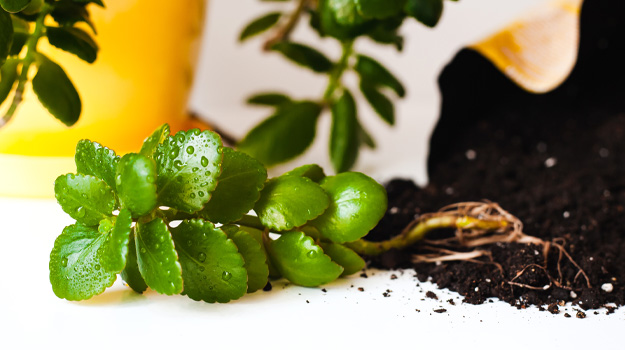
There’s nothing like decorating a room with healthy houseplants to create a welcoming atmosphere. As a bonus, houseplants help purify the air and are known to improve your well-being.
There is a difference between maintaining houseplants in the winter months compared to other months. At this time of year, you have less natural light, cold windows, uneven room temperature, lower humidity, and plants that are going into dormancy until spring. There are a few things to do so your plants stay in good shape until then.
Give them water: But don’t overwater. Let the water run out of the drainage holes, allow the soil to drain, and empty the saucer of excess water. There is no common watering frequency for plants, as much depends on the pot size and type of plant. Bigger pots retain moisture longer than small pots. Lush, leafy plants require more water than those with waxy leaves. And cacti and succulents need to be completely dry between waterings. Instead of using cold tap water, try using room temperature water. Less shock to the roots.
Since the plant is in its rest period, you don’t need to fertilize too much until late winter. You can use a diluted concentration (1/4 rate) once a month. Then in late winter/early spring, go back to full rates of fertilizer.
Check the humidity: During the winter months, the air often gets dry, and it gets drier as you turn up the heat. Some people use humidifiers to counter the dryness, and this will definitely help your plants. If you don’t use a humidifier, consider misting your plants every week. Another alternative is elevating the pot in its saucer with pebbles, craft beads or marbles. Keep the water level just below the pebbles/beads/marbles in the saucer and this layer of water will increase the humidity level around the plant.
Give them light: The days are shorter, so you may want to consider moving your plants to brighter windows for the winter months. It’s also beneficial to dust your leaves, as a dusty layer may hinder photosynthesis in which the plants use sunlight to synthesize nutrients from carbon dioxide and water. Rotate your pots when you water them: that way, all sides of the plant will get light and grow more evenly.
Watch the temperature: Indoor plants are content at room temperature. But if a plant is touching a cold window, or in a draft (some people like to leave their windows open a crack in the winter), the houseplants will suffer. The same goes if the plant is near sources of heat like hot air registers, radiators, fireplaces, and even electronic devices. Keep them in a spot that will provide a consistent room temperature.
Check for bugs: Often, you’ll find pests like mealy bugs, spider mites, fungus gnats, etc. showing up in winter. Be watchful and treat as soon as you see a problem.
One last bit of advice: Do not prune or repot. Save this until late winter or early spring.
There is an element of satisfaction in having lush greenery inside your dwelling during the winter months, in contrast to the cold, bleak scenery outdoors.
